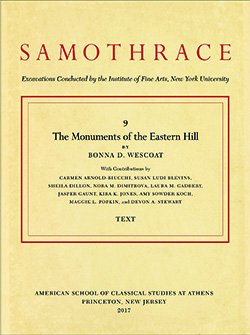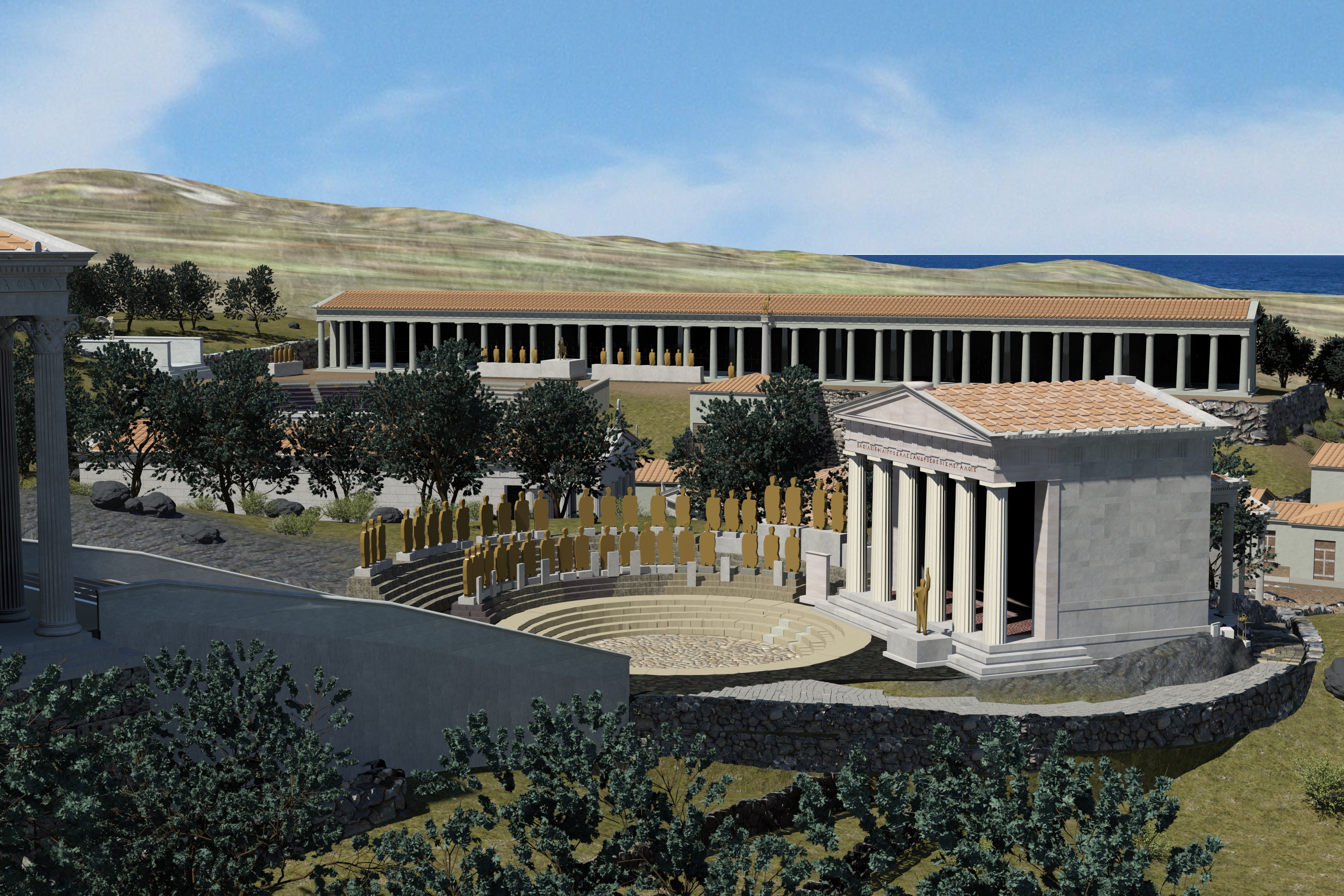Examining Samothracian Agency: An Interview with Samothrace 9 Author Bonna D. Wescoat

The American School of Classical Studies at Athens is pleased to announce the publication of The Monuments of the Eastern Hill (Samothrace 9) by Bonna D. Wescoat. Wescoat is the Samuel Candler Dobbs Professor of Art History at Emory University and serves as Director of Excavations at the Sanctuary of the Great Gods, Samothrace.
Bonna Wescoat has excavated at Samothrace for the past 40 years, but she was initially captivated by the site while receiving her undergraduate degree in art history from Smith College. “I went to the same college as my mother, and she recommended I take a Greek art class with one of her most memorable professors—Phyllis Lehmann. I took the class, and the way Lehmann spoke about Greek art, and Samothrace in particular, was just absolutely magical,” explained Wescoat. Her interest in Samothrace continued in graduate school, when she asked Lehmann if she could attend the excavations. “I was getting my graduate degree in England, and because the Samothrace excavations were run by the Institute of Fine Arts, Lehmann had to ask then-director James McCredie if I could join,” said Wescoat. “He said I could come for one month. That was in 1977, and I never looked back.”
.jpeg)
Bonna Wescoat at Samothrace. Photo Sam Holzman
While there have been a number of Hesperia articles dedicated to the Samothrace excavations, The Monuments of the Eastern Hill (Samothrace 9) is the first volume in the Samothrace series to be published by the American School of Classical Studies at Athens. The series, formerly published by Princeton University Press, details the results of excavations in the sanctuary conducted by the Institute of Fine Arts, New York University, which were initiated in 1938.
In The Monuments of the Eastern Hill, the key monuments that form the theatral complex at the entrance of the sanctuary—including the Theatral Circle, the Fieldstone Building with its masonry-style plaster interior, the marble Doric hexastyle Dedication of Philip III and Alexander IV, the elegant Ionic Porch later attached to the western side of the Dedication, and the remains of dozens of bronze statues that originally framed the Theatral Circle—are presented in their archaeological, architectural, and historical contexts.
Situating these monuments within the geography of the sanctuary in general, and of the Eastern Hill in particular, departs slightly from the organizational models of previous Samothrace volumes. “Earlier Samothrace volumes published a single, magnificent Hellenistic building,” explained Wescoat. “We made this change because the Eastern Hill forms a whole complex and display area, making it impossible to think of it as anything less than an integrated region.”

Restored digital model of the monuments on the Eastern Hill, Samothrace
Samothrace 9 also presents new perspectives on the site’s context by reevaluating the agency of the Samothracians. “The site has always been approached from the vantage of its famous initiates or famous donors, and through the extraordinary buildings with inscriptions naming Hellenistic kings. This means that the history of the site has always been an elite history,” explained Wescoat. “Yet it is impossible for the descendants of Alexander the Great to have been there directing work at the site. So, we now want to think about how the Samothracians brokered the cult, how they were actually involved in the development of the sanctuary, both in its physical expansion and in the growth of the cult.”
By emphasizing the perspective of the Samothracians, Wescoat examines how space, planning, and the landscape of the site affect our contemporary understanding of the Sanctuary of the Great Gods. “What we find on the Eastern Hill at Samothrace is a highly elaborated gathering space, within a sanctuary yet in advance of the cultic heart of the sanctuary, making it distinctive within the history of sacred space,” described Wescoat. “Eleusis has these things but they’re outside of the walls, while in Samothrace they are inside the temenos. It was exciting for us to think about all the ways the Samothracians made choices to manipulate the landscape, points of view, and placement of monuments in the service of sacred experience.”

Restored plan of the Sanctuary of the Great Gods, Samothrace
The themes of passage and perception generated from working on the Eastern Hill material will inform Wescoat’s future research at Samothrace, as the focus now shifts toward exploring the sanctuary’s Western Hill. “After considering the geographical division of the Western Hill, we have decided to split the publication into two volumes,” said Wescoat. “This will allow us to focus on what’s happening in that region rather than publishing building after building.”
Wescoat will spend time at Samothrace again this summer and looks forward most to future excavations of the site. “I know it might not sound like a monument, but I’m really excited to excavate the central torrent,” laughed Wescoat. “We still don’t know how you got from one side to the other, so we’re looking for points of crossing and intervention. This again follows our new kinesthetic focus on themes of passage and perception.”